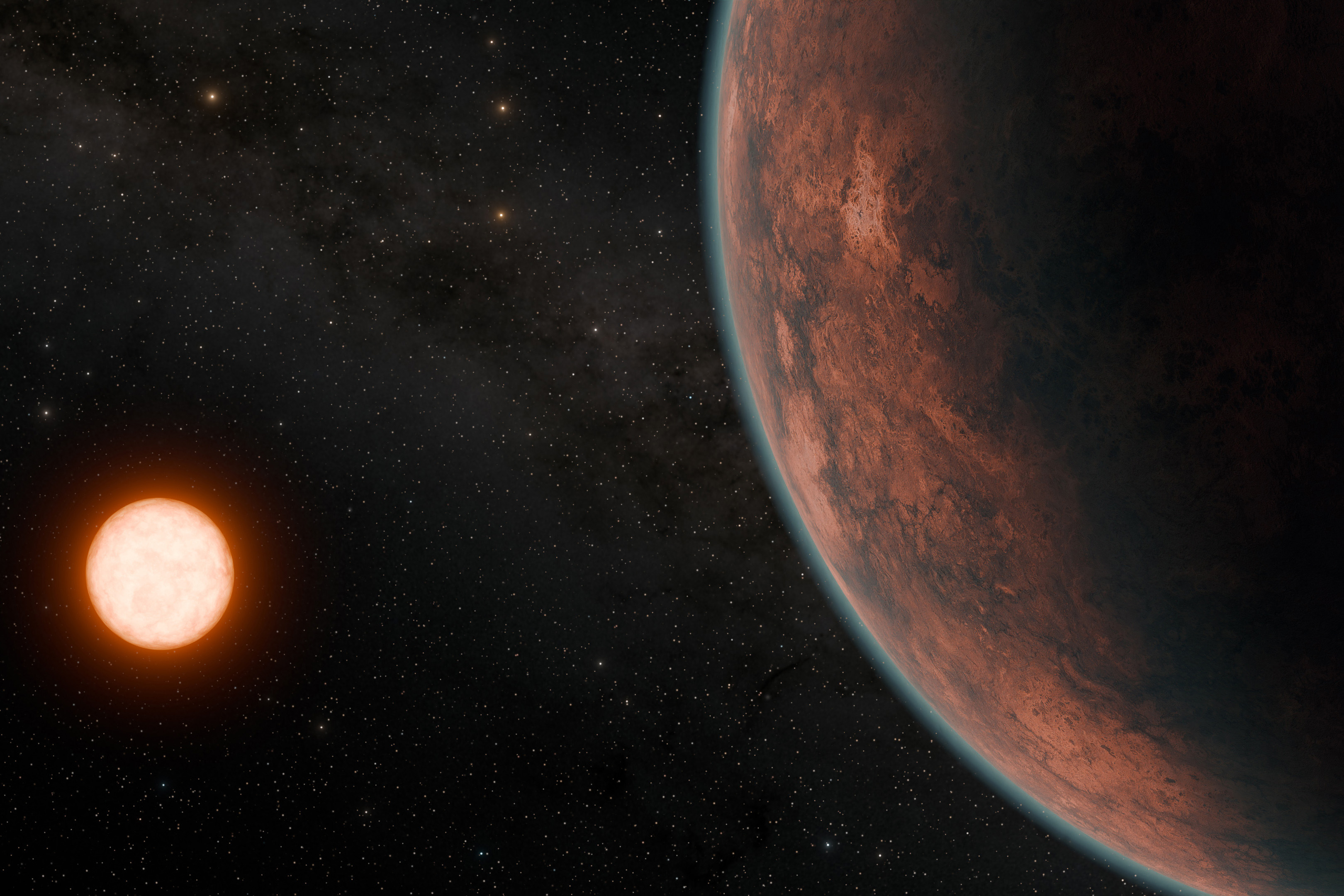
I co-led the publication for the discovery of Gliese 12 b with the Transiting Exoplanet Survey Satellite (TESS) and the CHEOPS spacecraft. This planet was a very exciting find, and our paper was featured in a NASA press release as a result of which this beautiful artist's rendition of the planet was commissioned!
A cornerstone in the study of exoplanets is to understand whether temperate planets around cool stars can maintain atmospheres, which is thought to be a prerequisite for their habitability. We think that red dwarf stars are very active in their youth, resulting in the atmospheres of close-in planets around them to be stripped. What we *don't*
understand is how close-in planets must be to lose their atmospheres. Because red dwarf stars are the most common stars in our galaxy and are known to very frequently have Earth-sized, rocky planets in their habitable zones, understanding whether they can retain their atmospheres is a high priority to understand whether they may be habitable.
However, studying these planets and their atmospheres presents a unique challenge. Firstly, these stars are frequently very active, and this activity can often drown out the subtle signatures of atmospheres that we look for around planets. Secondly, they're also very dim, so they need to be quite nearby for us to observe them.
Gliese 12 b is an exciting new Earth-sized planet that can answer these questions! It is only 12 parsecs (about 40 lightyears) away and receives between the amount of light Venus and Earth receive in the Solar system. Fortuitously, it also crosses the face of its star from our perspective, allowing us to study its atmosphere. This makes it the nearest temperate, transiting planet ever discovered. The host star is also *very* inactive, making it an ideal target for observation by the *James Webb* Space Telescope. With data from this telescope, we will be able to confidently determine not only whether Gliese 12 b has an atmosphere, but what kind of atmosphere it has, if any.
TESS found transits of Gliese 12 b, but it missed one transit when it was beaming the data back down to Earth. As a result, we didn't know exactly how long it took for Gliese 12 b to orbit its host star. I co-led a group to mobilize the efforts of multiple ground-based facilities and the CHEOPS satellite to identify the true period. With the new data, we were able to identify that the planet orbits its star every 12.7 days! With this information, we could calculate that the planet is temperate, receiving about 1.6 times the amount of light that the Earth does. Without an atmosphere, this planet could be about between 14 and 40 C, but an atmosphere like Venus' could make it significantly hotter. An Earth-like atmosphere with less greenhouse gases could maintain its balmy temperature. Excitingly, I expect we will know this soon with more data!
